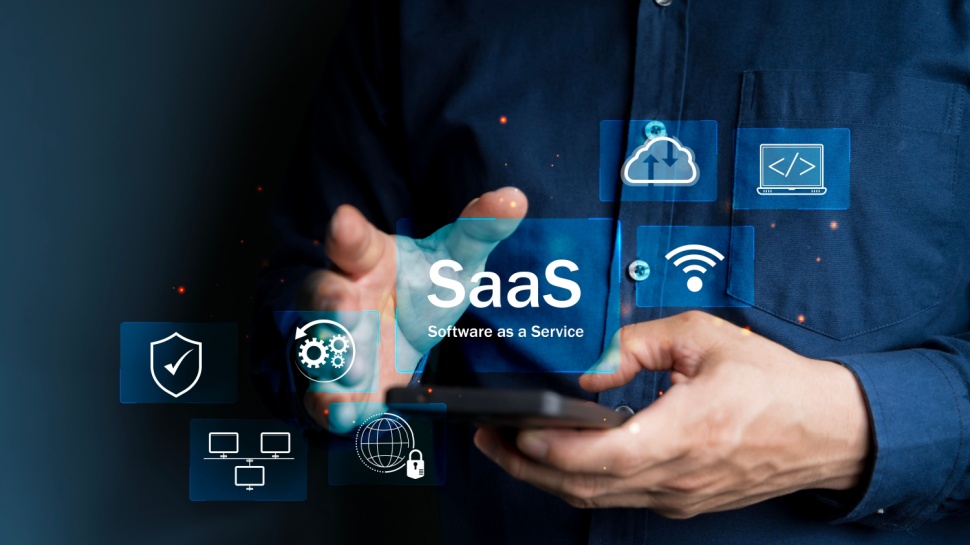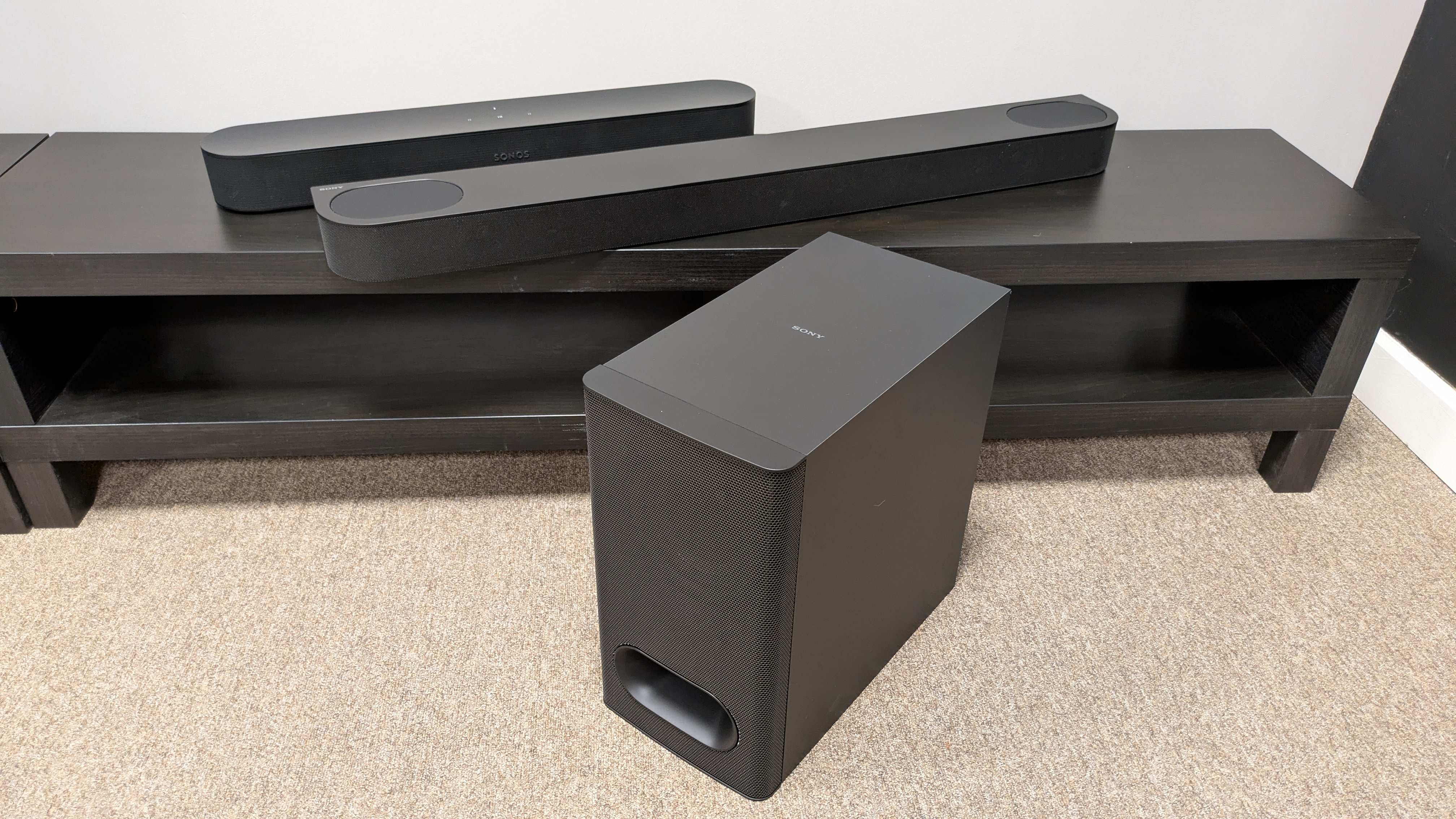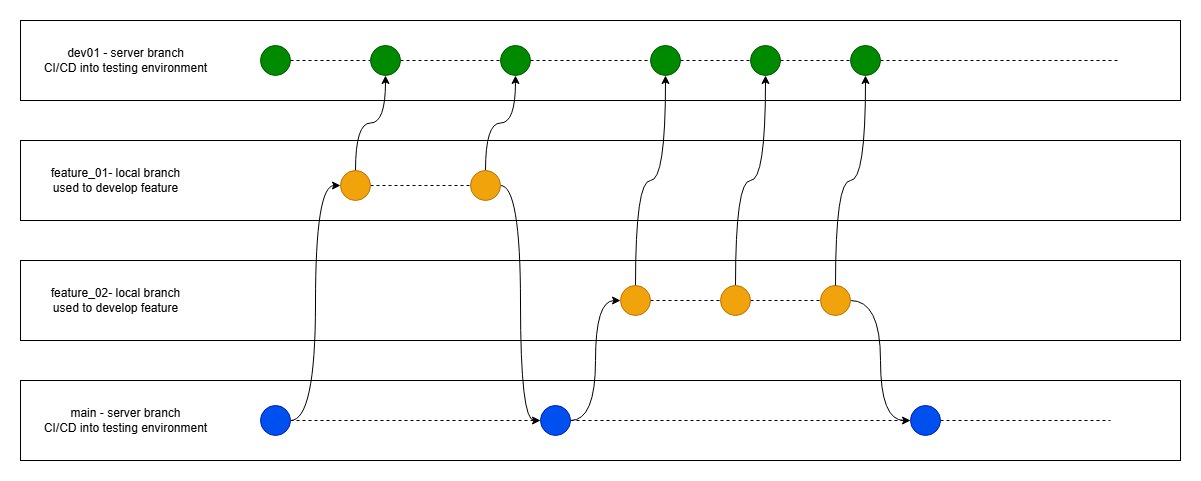Kubernetes Troubleshooting in the Cloud
Kubernetes has been used by organizations for nearly a decade – from wrapping applications inside containers, pushing them to a container repository, to full production deployment. At some point, we need to troubleshoot various issues in Kubernetes environments. In this blog post, I will review some of the common ways to troubleshoot Kubernetes, based on the hyperscale cloud environments. Common Kubernetes issues Before we deep dive into Kubernetes troubleshooting, let us review some of the common Kubernetes errors: CrashLoopBackOff - A container in a pod keeps failing to start, so Kubernetes tries to restart it over and over, waiting longer each time. This usually means there’s a problem with the app, something important is missing, or the setup is wrong. ImagePullBackOff - Kubernetes can’t download the container image for a pod. This might happen if the image name or tag is wrong, there’s a problem logging into the image registry, or there are network issues. CreateContainerConfigError - Kubernetes can’t set up the container because there’s a problem with the settings like wrong environment variables, incorrect volume mounts, or security settings that don’t work. PodInitializing - A pod is stuck starting up, usually because the initial setup containers are failing, taking too long, or there are problems with the network or attached storage. Kubectl for Kubernetes troubleshooting Kubectl is the native and recommended way to manage Kubernetes, and among others to assist in troubleshooting various aspects of Kubernetes. Below are some examples of using kubectl: View all pods and their statuses: kubectl get pods Get detailed information and recent events for a specific pod: kubectl describe pod View logs from a specific container in a multi-container pod: kubectl logs -c Open an interactive shell inside a running pod: kubectl exec -it -- /bin/bash Check the status of cluster nodes: kubectl get nodes Get detailed information about a specific node: kubectl describe node Additional information about kubectl can be found at: https://kubernetes.io/docs/reference/kubectl Remote connectivity to Kubernetes nodes In rare cases, you may need to remotely connect a Kubernetes node as part of troubleshooting. Some of the reasons to do so may be troubleshooting hardware failures, collecting system-level logs, cleaning up disk space, restarting services, etc. Below are secure ways to remotely connect to Kubernetes nodes: To connect to an Amazon EKS node using AWS Systems Manager Session Manager from the command line, use the following command: aws ssm start-session --target For more details, see: https://docs.aws.amazon.com/eks/latest/best-practices/protecting-the-infrastructure.html To connect to an Azure AKS node using Azure Bastion from the command line, run the commands below to get the private IP address of the AKS node and SSH from a bastion connected environment: az aks machine list --resource-group --cluster-name --nodepool-name -o table ssh -i /path/to/private_key.pem azureuser@ For more details, see: https://learn.microsoft.com/en-us/azure/aks/node-access To connect to a GKE node using the gcloud command combined with Identity-Aware Proxy (IAP), use the following command: gcloud compute ssh --zone --tunnel-through-iap For more details, see: https://cloud.google.com/compute/docs/connect/ssh-using-iap#gcloud Monitoring and observability To assist in troubleshooting, Kubernetes has various logs, some are enabled by default (such as container logs) and some need to be explicitly enabled (such as Control Plane logs). Below are some of the ways to collect logs in managed Kubernetes services. Amazon EKS To collect EKS node and application logs, use CloudWatch Container Insights (including resource utilization), as explained below: https://docs.aws.amazon.com/AmazonCloudWatch/latest/monitoring/container-insights-detailed-metrics.html To collect EKS Control Plane logs to CloudWatch logs, follow the instructions below: https://docs.aws.amazon.com/eks/latest/userguide/control-plane-logs.html To collect metrics from the EKS cluster, use Amazon Managed Service for Prometheus, as explained below: https://docs.aws.amazon.com/eks/latest/userguide/prometheus.html Azure AKS To collect AKS node and application logs (including resource utilization), use Azure Monitor Container Insights, as explained below: https://learn.microsoft.com/en-us/azure/azure-monitor/containers/container-insights-data-collection-configure To collect AKS Control Plane logs to Azure Monitor, configure the diagnostic setting, as explained below: https://docs.azure.cn/en-us/aks/monitor-aks?tabs=cilium#aks-control-planeresource-logs To collect metrics from the AKS cluster, use Azure Monitor managed service for Prometheus, as explained below: https://learn.microsoft.com/en-us/azure/

Kubernetes has been used by organizations for nearly a decade – from wrapping applications inside containers, pushing them to a container repository, to full production deployment.
At some point, we need to troubleshoot various issues in Kubernetes environments.
In this blog post, I will review some of the common ways to troubleshoot Kubernetes, based on the hyperscale cloud environments.
Common Kubernetes issues
Before we deep dive into Kubernetes troubleshooting, let us review some of the common Kubernetes errors:
- CrashLoopBackOff - A container in a pod keeps failing to start, so Kubernetes tries to restart it over and over, waiting longer each time. This usually means there’s a problem with the app, something important is missing, or the setup is wrong.
- ImagePullBackOff - Kubernetes can’t download the container image for a pod. This might happen if the image name or tag is wrong, there’s a problem logging into the image registry, or there are network issues.
- CreateContainerConfigError - Kubernetes can’t set up the container because there’s a problem with the settings like wrong environment variables, incorrect volume mounts, or security settings that don’t work.
- PodInitializing - A pod is stuck starting up, usually because the initial setup containers are failing, taking too long, or there are problems with the network or attached storage.
Kubectl for Kubernetes troubleshooting
Kubectl is the native and recommended way to manage Kubernetes, and among others to assist in troubleshooting various aspects of Kubernetes.
Below are some examples of using kubectl:
-
View all pods and their statuses:
kubectl get pods
-
Get detailed information and recent events for a specific pod:
kubectl describe pod
-
View logs from a specific container in a multi-container pod:
kubectl logs
-c -
Open an interactive shell inside a running pod:
kubectl exec -it
-- /bin/bash -
Check the status of cluster nodes:
kubectl get nodes
-
Get detailed information about a specific node:
kubectl describe node
Additional information about kubectl can be found at:
https://kubernetes.io/docs/reference/kubectl
Remote connectivity to Kubernetes nodes
In rare cases, you may need to remotely connect a Kubernetes node as part of troubleshooting. Some of the reasons to do so may be troubleshooting hardware failures, collecting system-level logs, cleaning up disk space, restarting services, etc.
Below are secure ways to remotely connect to Kubernetes nodes:
-
To connect to an Amazon EKS node using AWS Systems Manager Session Manager from the command line, use the following command:
aws ssm start-session --target
For more details, see: https://docs.aws.amazon.com/eks/latest/best-practices/protecting-the-infrastructure.html
-
To connect to an Azure AKS node using Azure Bastion from the command line, run the commands below to get the private IP address of the AKS node and SSH from a bastion connected environment:
az aks machine list --resource-group
--cluster-name --nodepool-name -o table ssh -i /path/to/private_key.pem azureuser@
For more details, see: https://learn.microsoft.com/en-us/azure/aks/node-access
-
To connect to a GKE node using the gcloud command combined with Identity-Aware Proxy (IAP), use the following command:
gcloud compute ssh
--zone --tunnel-through-iap For more details, see: https://cloud.google.com/compute/docs/connect/ssh-using-iap#gcloud
Monitoring and observability
To assist in troubleshooting, Kubernetes has various logs, some are enabled by default (such as container logs) and some need to be explicitly enabled (such as Control Plane logs).
Below are some of the ways to collect logs in managed Kubernetes services.Amazon EKS
To collect EKS node and application logs, use CloudWatch Container Insights (including resource utilization), as explained below:
https://docs.aws.amazon.com/AmazonCloudWatch/latest/monitoring/container-insights-detailed-metrics.html
To collect EKS Control Plane logs to CloudWatch logs, follow the instructions below:
https://docs.aws.amazon.com/eks/latest/userguide/control-plane-logs.html
To collect metrics from the EKS cluster, use Amazon Managed Service for Prometheus, as explained below:
https://docs.aws.amazon.com/eks/latest/userguide/prometheus.htmlAzure AKS
To collect AKS node and application logs (including resource utilization), use Azure Monitor Container Insights, as explained below:
https://learn.microsoft.com/en-us/azure/azure-monitor/containers/container-insights-data-collection-configure
To collect AKS Control Plane logs to Azure Monitor, configure the diagnostic setting, as explained below:
https://docs.azure.cn/en-us/aks/monitor-aks?tabs=cilium#aks-control-planeresource-logs
To collect metrics from the AKS cluster, use Azure Monitor managed service for Prometheus, as explained below:
https://learn.microsoft.com/en-us/azure/azure-monitor/metrics/prometheus-metrics-overview#enable-azure-monitor-managed-service-for-prometheusGoogle GKE
GKE node and Pod logs are sent automatically to Google Cloud Logging, as documented below:
https://cloud.google.com/kubernetes-engine/docs/concepts/about-logs#collecting_logs
GKE Control Plane logs are not enabled by default, as documented below:
https://cloud.google.com/kubernetes-engine/docs/how-to/view-logs
To collect metrics from the GKE cluster, use Google Cloud Managed Service for Prometheus, as explained below:
https://cloud.google.com/stackdriver/docs/managed-prometheus/setup-managed
Enable GKE usage metering to collect resource utilization, as documented below:
https://cloud.google.com/kubernetes-engine/docs/how-to/cluster-usage-metering#enablingTroubleshooting network connectivity issues
There may be various network-related issues when managing Kubernetes clusters. Some of the common network issues are nodes or pods not joining the cluster, inter-pod communication failures, connectivity to the Kubernetes API server, etc.
Below are some of the ways to troubleshoot network issues in managed Kubernetes services.Amazon EKS
Enable network policy logs to investigate network connection through Amazon VPC CNI, as explained below:
https://docs.aws.amazon.com/eks/latest/userguide/network-policies-troubleshooting.html
Use the guide below for monitoring network performance issues in EKS:
https://docs.aws.amazon.com/eks/latest/best-practices/monitoring_eks_workloads_for_network_performance_issues.html
Temporary enable VPC flow logs (due to high storage cost in large production environments) to query network traffic of EKS clusters deployed in a dedicated subnet, as explained below:
https://aws.amazon.com/blogs/networking-and-content-delivery/using-vpc-flow-logs-to-capture-and-query-eks-network-communications/Azure AKS
Use the guide below to troubleshoot connectivity issues to the AKS API server:
https://learn.microsoft.com/en-us/troubleshoot/azure/azure-kubernetes/connectivity/troubleshoot-cluster-connection-issues-api-server
Use the guide below to troubleshoot outbound connectivity issues from the AKS cluster:
https://learn.microsoft.com/en-us/troubleshoot/azure/azure-kubernetes/connectivity/basic-troubleshooting-outbound-connections
Use the guide below to troubleshoot connectivity issues to applications deployed on top of AKS:
https://learn.microsoft.com/en-us/troubleshoot/azure/azure-kubernetes/connectivity/connection-issues-application-hosted-aks-cluster
Use Container Network Observability to troubleshoot connectivity issues within an AKS cluster, as explained below:
https://learn.microsoft.com/en-us/azure/aks/container-network-observability-conceptsGoogle GKE
Use the guide below to troubleshoot network connectivity issues in GKE:
https://cloud.google.com/kubernetes-engine/docs/troubleshooting/connectivity-issues-in-cluster
Temporary enable VPC flow logs (due to high storage cost in large production environments) to query network traffic of GKR clusters deployed in a dedicated subnet, as explained below:
https://cloud.google.com/vpc/docs/using-flow-logsSummary
I am sure there are many more topics to cover when troubleshooting problems with Kubernetes clusters, however, in this blog post, I highlighted the most common cases.
Kubernetes by itself is an entire domain of expertise and requires many hours to deep dive into and understand.
I strongly encourage anyone using Kubernetes to read vendors' documentation, and practice in development environments, until you gain hands-on experience running production environments.About the author
Eyal Estrin is a cloud and information security architect, an AWS Community Builder, and the author of the books Cloud Security Handbook and Security for Cloud Native Applications, with more than 20 years in the IT industry.
You can connect with him on social media (https://linktr.ee/eyalestrin).
Opinions are his own and not the views of his employer.










































































![New Apple iPad mini 7 On Sale for $399! [Lowest Price Ever]](https://www.iclarified.com/images/news/96096/96096/96096-640.jpg)
![Apple Developing Battery Case for iPhone 17 Air Amid Battery Life Concerns [Report]](https://www.iclarified.com/images/news/97208/97208/97208-640.jpg)
![Apple to Split iPhone Launches Across Fall and Spring in Major Shakeup [Report]](https://www.iclarified.com/images/news/97211/97211/97211-640.jpg)
![Apple to Move Camera to Top Left, Hide Face ID Under Display in iPhone 18 Pro Redesign [Report]](https://www.iclarified.com/images/news/97212/97212/97212-640.jpg)















































































































_Inge_Johnsson-Alamy.jpg?width=1280&auto=webp&quality=80&disable=upscale#)




























































































































![[The AI Show Episode 145]: OpenAI Releases o3 and o4-mini, AI Is Causing “Quiet Layoffs,” Executive Order on Youth AI Education & GPT-4o’s Controversial Update](https://www.marketingaiinstitute.com/hubfs/ep%20145%20cover.png)






























































































































































![From Art School Drop-out to Microsoft Engineer with Shashi Lo [Podcast #170]](https://cdn.hashnode.com/res/hashnode/image/upload/v1746203291209/439bf16b-c820-4fe8-b69e-94d80533b2df.png?#)

![[DEALS] Microsoft 365: 1-Year Subscription (Family/Up to 6 Users) (23% off) & Other Deals Up To 98% Off – Offers End Soon!](https://www.javacodegeeks.com/wp-content/uploads/2012/12/jcg-logo.jpg)

































































































